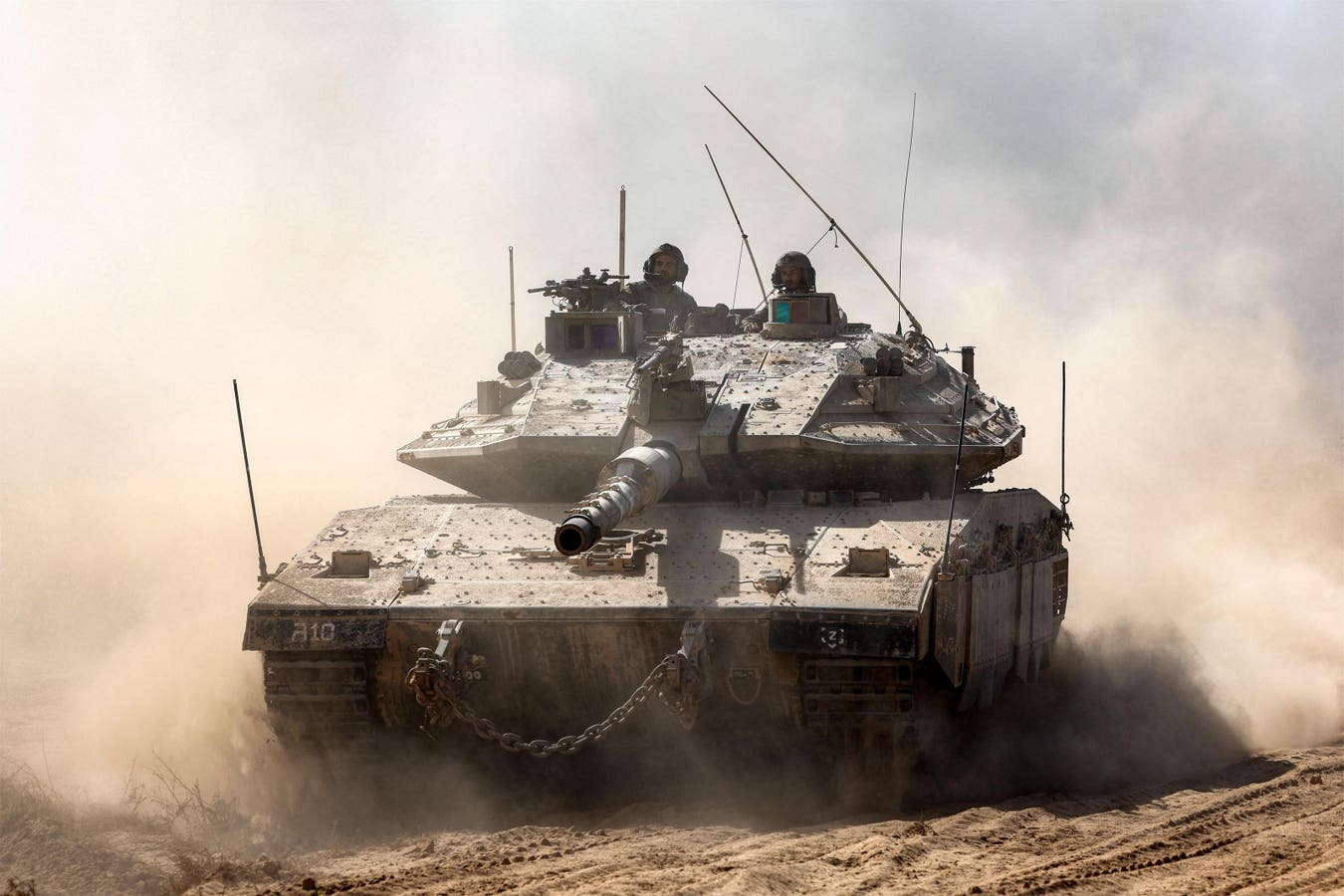The protection and counter-punch offered by active protection systems fitted to Israel’s personnel carriers and tanks could reduce Israeli and Palestinian casualties.
Last year, Israeli defense electronics maker, Elbit Systems, successfully completed a series of interception tests of its Iron Fist active protection system (APS) which was set to be installed on Israel Defense Forces (IDF) new Eitan armored personnel carriers (APCs) and D9 armored bulldozers.
In 2023, the first of Israel’s Eitans began to deploy with units of the IDF’s Nahal brigade. Similar to other armored fighting vehicles, such as the American Stryker, the European Boxer and the French VBCI, the eight-wheeled Eitan boasts a lighter design with better armor and more protection than previous IDF personnel carriers thanks in part to its Iron Fist APS.
Given that one of the first units to train on the Eitan is the 50th Battalion’s Sayeret Nahal, an elite unit within the brigade, the Iron Fist-equipped personnel carriers will likely soon be in action as IDF forces push into Gaza.
So too will the new Merkava V advanced tanks (and Merkava IVs) which now equip the IDF’s 401st Armored Brigade which falls under Israel’s Southern Command. The Merkava IV incorporates new targeting and sensor systems including Rafael’s Trophy Active Protection System.
In both cases, the active protection systems are expected to allow the armored vehicles to operate more effectively in threat-dense scenarios such as they will regrettably find in Gaza.
In basic terms, these armored protection systems use flat-panel radars and specialized optical systems to detect munitions fired at them – whether rounds from unguided rocket-propelled grenades like the ex-Soviet RPG
RPG
If a fast-moving projectile, like a missile, is fired at an APS-equipped vehicle, the systems can determine whether the projectile will hit the vehicle or not. If it appears to be on-target, the APS instantly fires one of several kinds of interceptor projectiles or “soft-kill” directed-energy (lasers) fire at the inbound missile, blowing it up in midair. The whole sequence happens in seconds, as illustrated by this video of Elbit’s Iron Fist in action.
As noted in the video, APS systems can work in conjunction with new targeting tech like Elbit’s Iron Vision helmet which enables tank commanders to see “outside” the tank with peripheral vision that is knitted together from sensors and cameras much like the helmet-mounted targeting system used by F-35 pilots.
In addition to firing knock-down shots at incoming munitions, both the Iron Fist and Trophy systems can trace-back their flight paths, locating their launch points and automatically train a weapon system – a Merkava’s 120mm smooth-bore main gun or an Eitan’s 30 mm turret gun – on the point from which the missile was fired. In either vehicle a gunner only needs to pull the weapon trigger.
Defense technology observers including Lewis Page, currently US comment editor at The Telegraph UK newspaper, have speculated that in Gaza and elsewhere the APS systems in use by the IDF’s armored and infantry brigades may yield a trio of beneficial impacts on the battlefield.
First and most obviously, fewer (potentially many fewer) armored personnel carriers like the Eitan (which carries nine troops) and tanks like the Merkava V “Barak” (3 crew) will be damaged or destroyed by Hamas fire. That will lower IDF killed and wounded.
Secondly, the protection afforded by APS will likely make IDF APC and tank gunners more discriminating, less likely to fire at suspicious targets (sources of enemy fire) they are unsure of and so less likely to cause unintended non-combatant Palestinian casualties in the confines of Gaza streets.
Lastly, with APS’ ability to pinpoint the location of incoming fires and react in seconds with precision counter-fire, Hamas anti-tank missile batteries, roving missile launcher teams and RPG-wielding fighters are more likely to be silenced and taken out of action. That could allow the IDF to clear sectors of Gaza more quickly though risks from improvised explosive devices IEDs and firearms toting Hamas members and other threats will still have to be neutralized.
It’s important to point out that APS systems can be complex and difficult to integrate on ground vehicles.
The U.S. Army has planned to field a version of Iron Fist (formally called Iron Fist Light Decoupled) on its M2A4 Bradley Fighting Vehicles for several years but technical issues and a lack of funding has prevented its advancement to low or full-rate production.
Earlier this month, Major General Glenn Dean, the U.S. Army’s program executive officer for ground combat systems, told Defense News that the Trophy APS-equipped Abrams tanks the Army has fielded in Europe for the last three years are a “bit of a challenge to operate and really deploy and sustain it because installation on tanks is a little bit of a burden…”
Nonetheless the Army is proceeding with the acquisition of APS for its Bradley and Stryker armored fighting vehicles and is looking to adapt APS to not only defend the sides of a vehicle but also the top, which would address threats like loitering munitions and drones.
Even if the APS on IDF Eitans, Merkavas and other ground armor isn’t perfect, Israel will surely place equipped vehicles squarely in the fight in Gaza while keeping an eye northward to the Lebanon border where the threat of rocket and missile fire is exponentially greater.
Read the full article here





